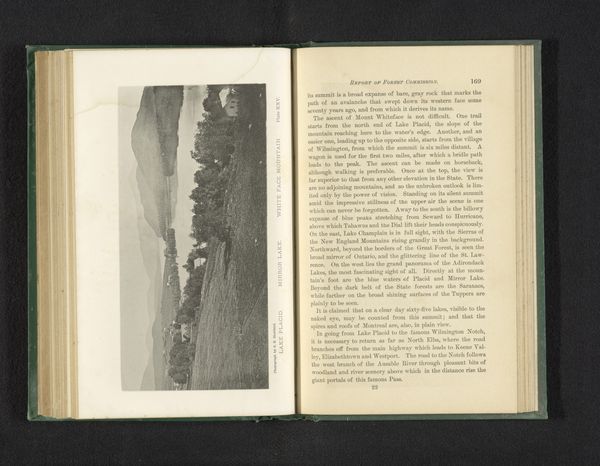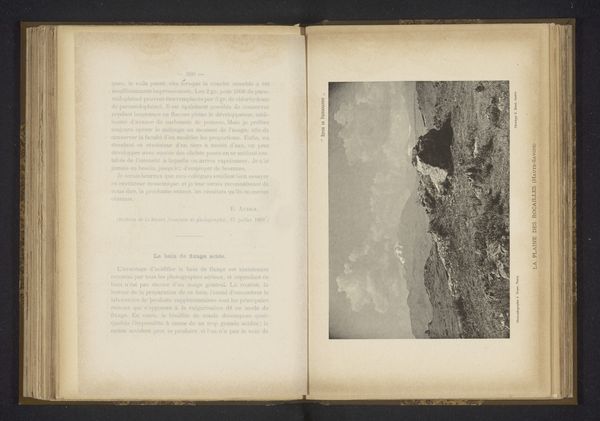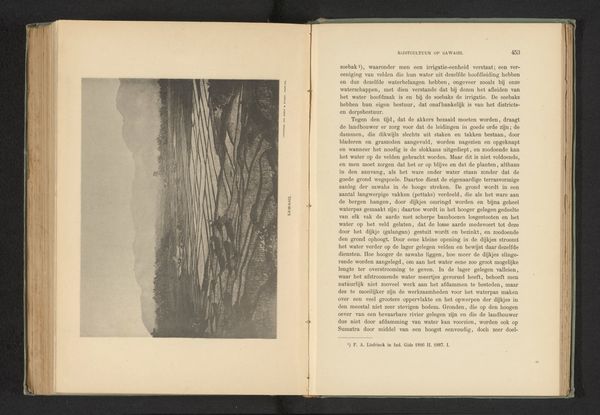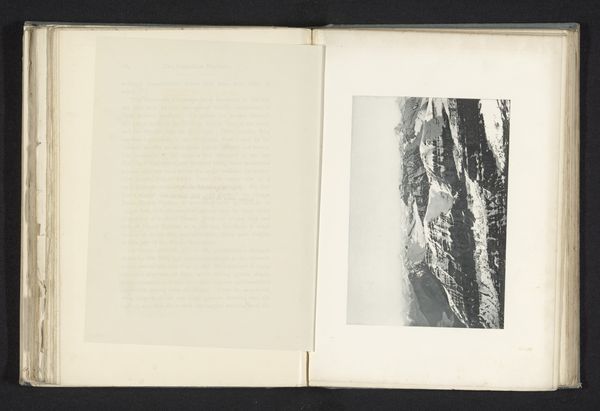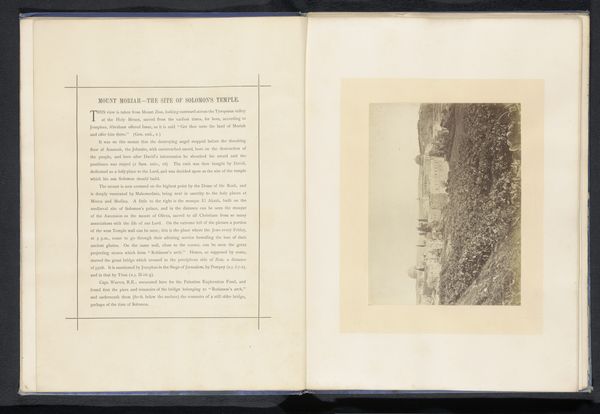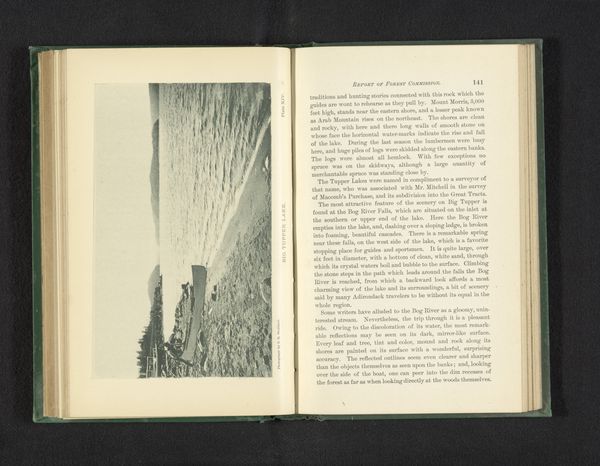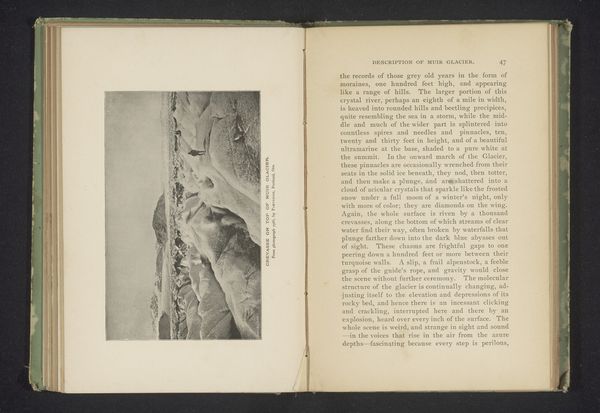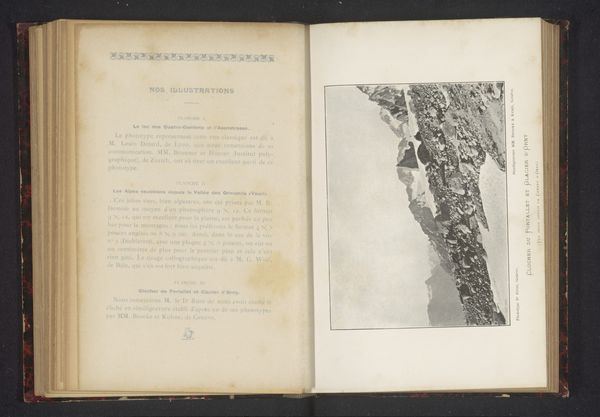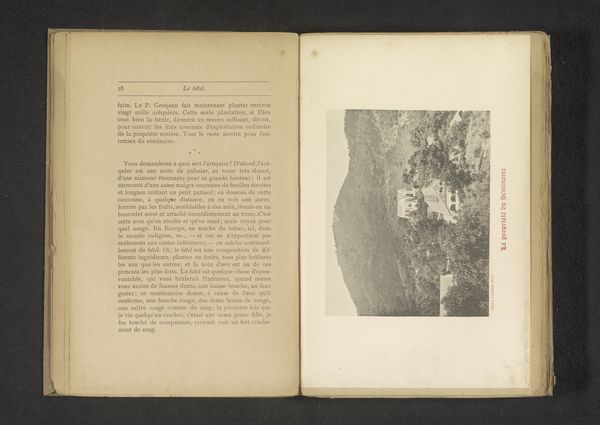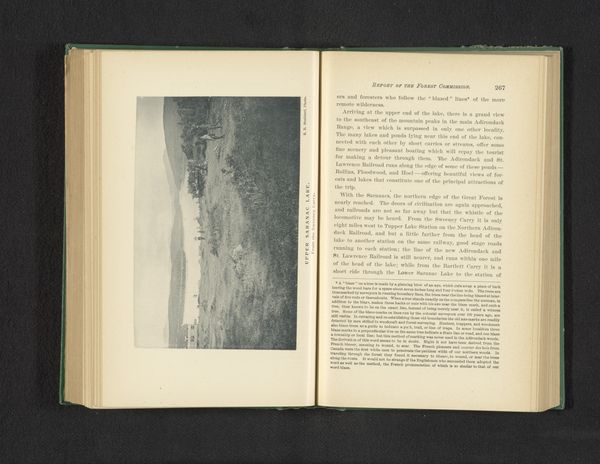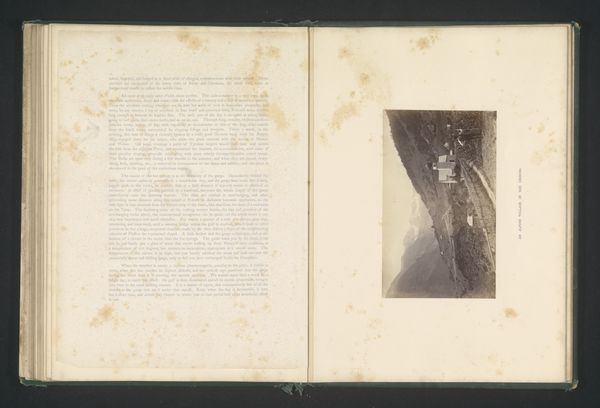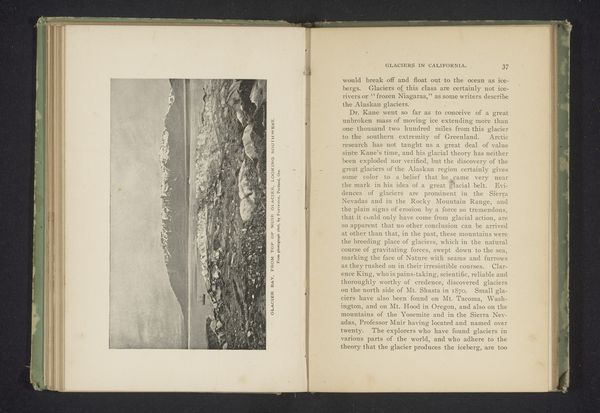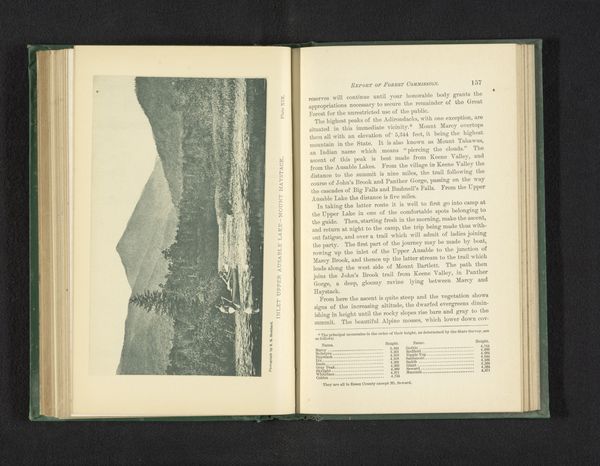
print, photography, albumen-print
# print
#
book
#
landscape
#
photography
#
coloured pencil
#
cityscape
#
watercolor
#
albumen-print
Dimensions: height 127 mm, width 197 mm
Copyright: Rijks Museum: Open Domain
Curator: What a striking find—here we have "Gezicht op Jeruzalem," or "View of Jerusalem," created before 1893 by F. Thévoz. It appears to be an albumen print, carefully mounted in what seems to be an original book. Editor: My initial impression is one of texture—look at the varied surfaces, from the rough edges of the book's pages to the soft focus of the distant cityscape. There is also an overwhelming feeling of distance. I am particularly struck by the labor it represents; think of the chemistries involved, the long exposures required, the craft of mounting such delicate photographs within a bound volume. Curator: Indeed, and the book format itself provides a framework for interpreting the image. Think of books as containers of knowledge, imbuing this photograph of Jerusalem with an aura of scholarship and authority. The city itself becomes a symbol of enduring cultural and religious significance, magnified by this presentation. Editor: That's a great point, framing changes everything, but, I keep returning to the process. Albumen printing, so reliant on egg whites and sunlight... that visceral connection to organic materials, the artist quite literally putting themselves in the picture—so vastly different from how we think about photographic objectivity today. And a laborious craft, bound by many constraints that affect every image outcome. Curator: Constraints that arguably enrich the image with symbolic resonance! The tones, achieved through manipulation of those very material processes, imbue the city with a soft, almost dreamlike quality. A nostalgic haze over the spiritual homeland, laden with cultural expectations. The muted palette adds an air of solemnity and timelessness. Editor: Time, certainly. Not just within the image, but time embedded in its making. Every imperfection, every tonal variation is the physical imprint of history itself. The means of production becomes inextricably linked to the content. How many hands touched this print, how many stages were necessary to preserve and disseminate this single view? Curator: So, we see Jerusalem not just as a place but also as an idea shaped by the intersection of faith, craft, and historical processes. Editor: Exactly, an idea meticulously built from material elements. Looking closely, I realize the material process speaks louder than the finished product in this particular print.
Comments
No comments
Be the first to comment and join the conversation on the ultimate creative platform.
